Historic Grain Elevators In Inglis, Manitoba
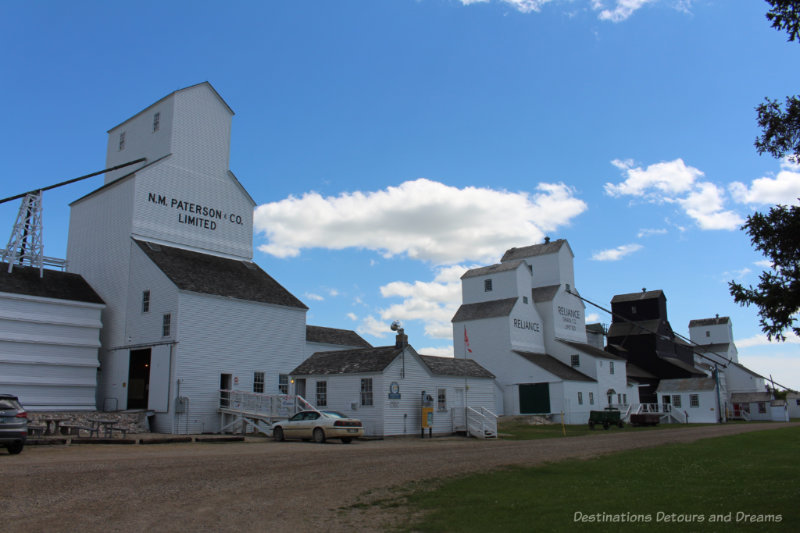
The Inglis Grain Elevators National Historic Site in Inglis, Manitoba relives the golden age of wooden grain elevators on the Canadian prairies
A row of five “prairie giants” in a small town in western Manitoba provide a rare connection to Manitoba’s agricultural heritage. The five standard-plan wooden grain elevators were built between 1922 and 1941 in Manitoba’s golden age of elevators. There were nearly 4,000 elevators on the Canadian Prairies in the 1920s and well over 5,500 by the 1940s. Today the vintage elevators at Inglis are a National Historic Site of Canada.
Elevators such as these were once a striking feature of the Canadian prairie landscape. Introduced in the 1880s, they provided an efficient method of grain handling. Advances in technology in the latter part of the 20th century led to a dramatic drop in the number of old-style elevators and saw the creation of huge concrete silo elevators. The elevators at Inglis are all wood construction. Plagues in front of the elevators tell their stories. Each elevator was built by a different grain company.
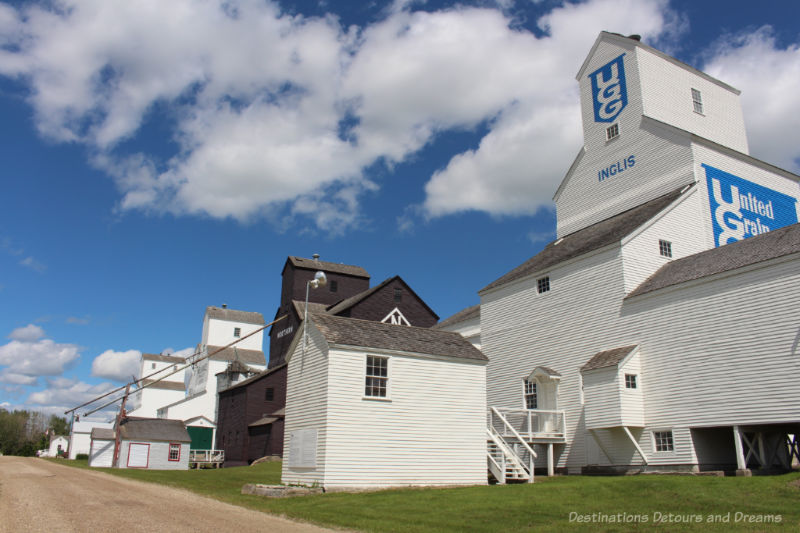
Side Note: When I was growing up, although their number were already diminishing, I never thought the elevators, sometimes called prairie sentinels, would disappear from the landscape. They were iconic symbols of the prairie. I’ve become a bit obsessed with seeking out places saving their history. In the summer of 2017, I visited the Canadian Grain Elevator Discovery Centre in Nanton, Alberta south of Calgary. I saw the elevators from the outside, but did not get inside because I’d chosen a day they weren’t open. In the summer of 2018, I toured a museum in an elevator in Plum Coulee, a small southern Manitoba town. See my post A Grain Elevator Museum in Southern Manitoba. And in the summer of 2019, during a road trip to Saskatchewan and Alberta, I visited not only the centre in Inglis, but also the Spruce Grove Grain Elevator Museum in Spruce Grove, Alberta not far from Edmonton. The young tour guide there was very enthusiastic about the elevator history and, even after having visited other sites, I learned new things. You may see a post about this site on the blog sometime in the future.
The standard-plan wood-construction elevators were gabled-roofed, rectangular structures built with two-by-four and two-by-six boards spiked together horizontally to allow the elevator to withstand the pressure of thousands of pounds of stored grain. Located next to a rail siding, each elevator contained a number of storage bins and an elevating device. Grain from a farmer’s truck or wagon was dumped through a floor grate into a hopper bin and lifted to the top of the elevator via cups on a moving belt. Levers controlled by the elevator agent opened and closed chutes to allow gravity to direct the grain to the proper storage bin. Grain could be directed from bin to bin or into railway cars outside the elevator.
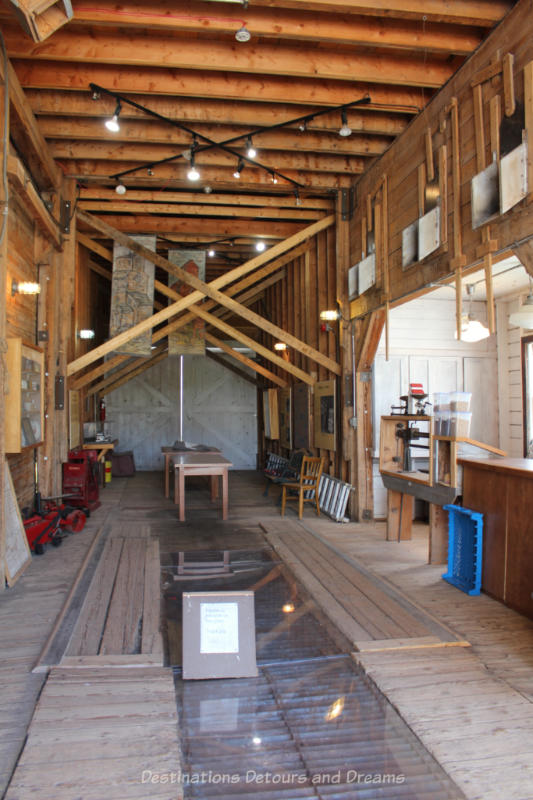
The interiors of two of the elevators are open to the public. The Paterson Elevator was one of the four original elevators built in 1922. Although the exterior wood siding has been replaced, the interior structure and mechanical systems remain virtually intact. This elevator is the main part of the museum highlighting elevator operations. The floor grate where grain was dumped is covered with glass.
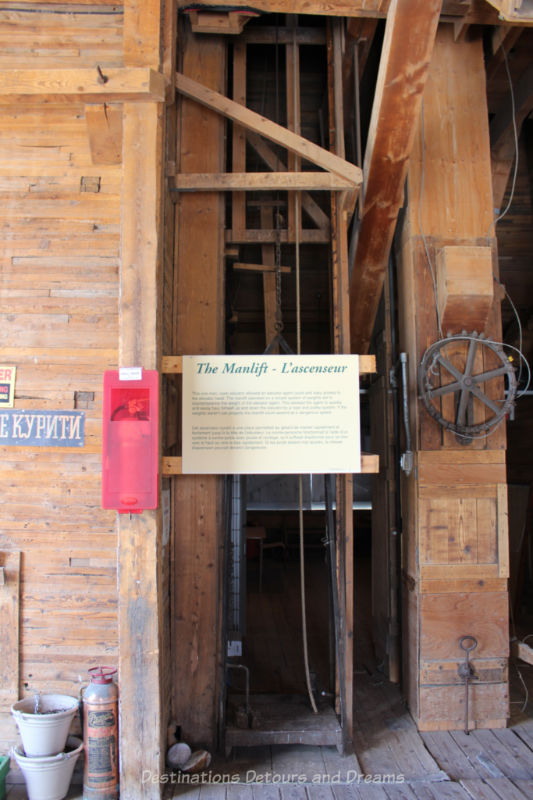
In its day, the Paterson elevator represented the top of the line in grain handling. It has a manlift which, operating on a simple system of weights to counterbalance the weight of the elevator agent, allowed the elevator agent to get to the elevator head without climbing a ladder. It also had a dust collection system designed to reduce the danger of fire from the explosive grain dust. I noticed the absence of the dusty grain smell I’d expected. Whether that was because of the collection system or years of being cleaned and operating as a museum I don’t know.
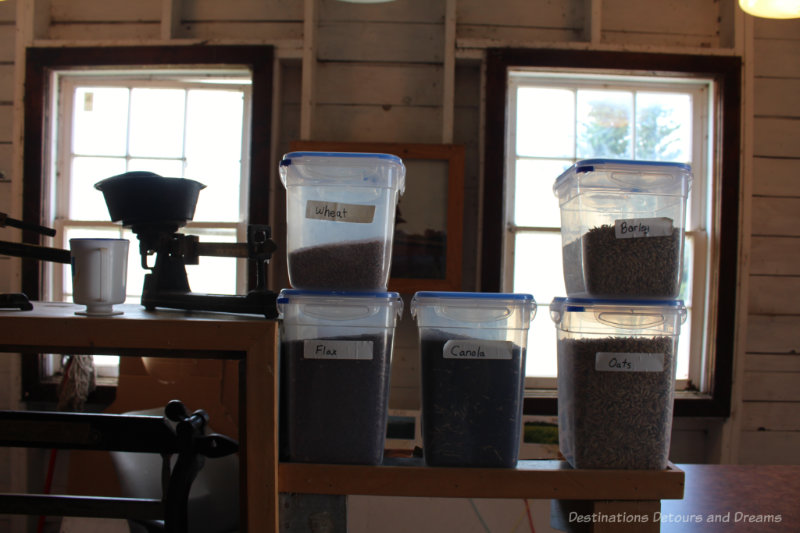
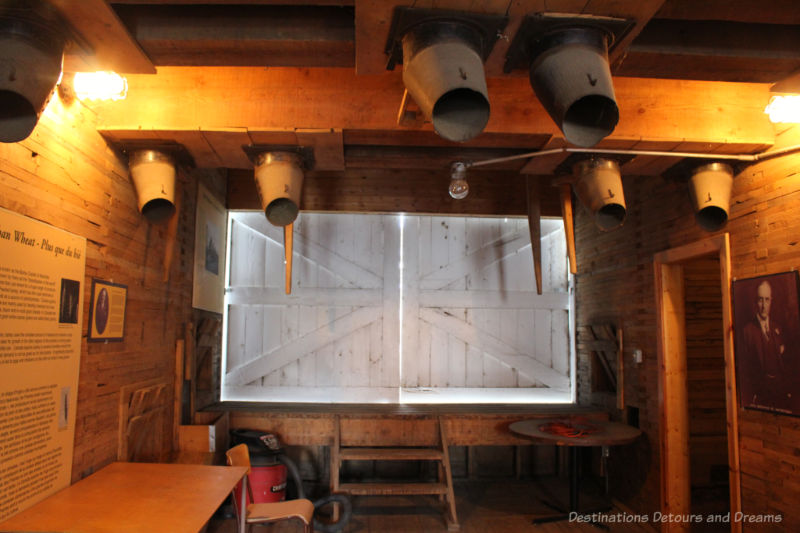
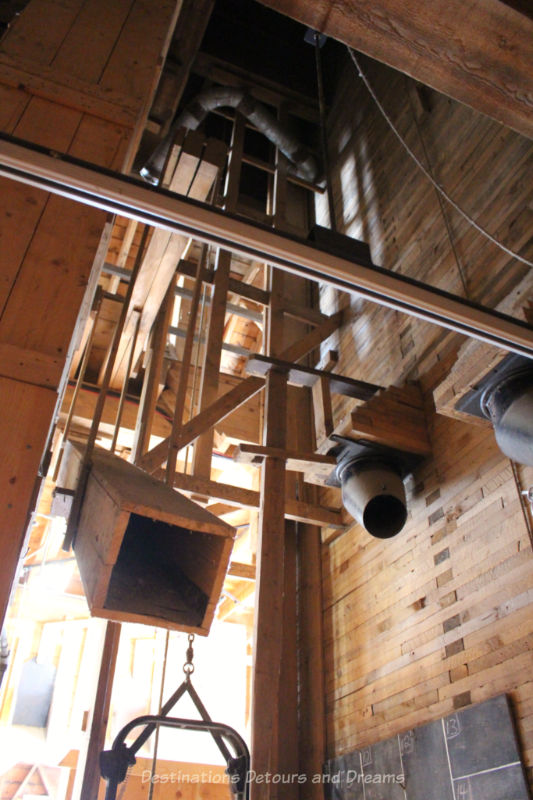
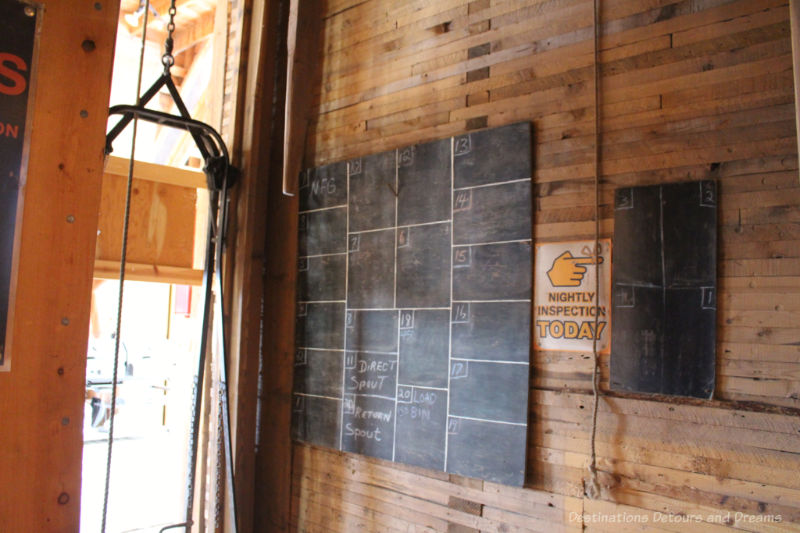
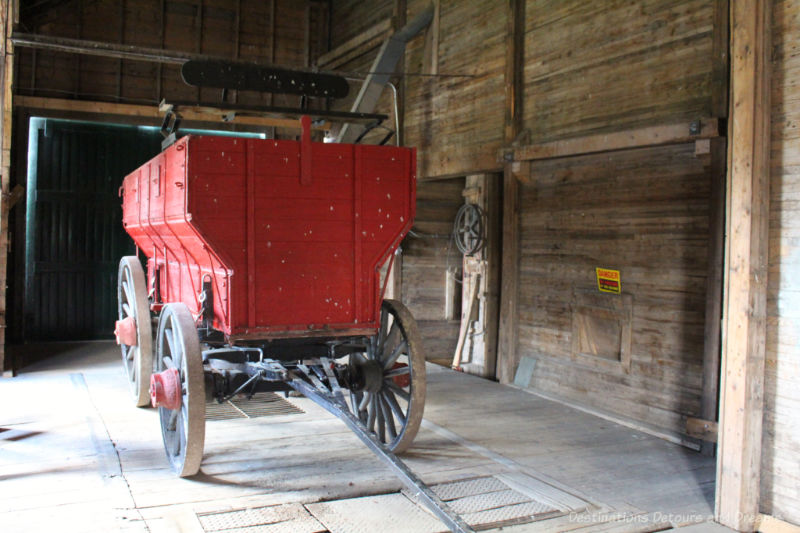
The interior of a Reliance elevator is also open to the public. It is a smaller elevator than the Paterson one. The annex contains a recreated elevator agent office.
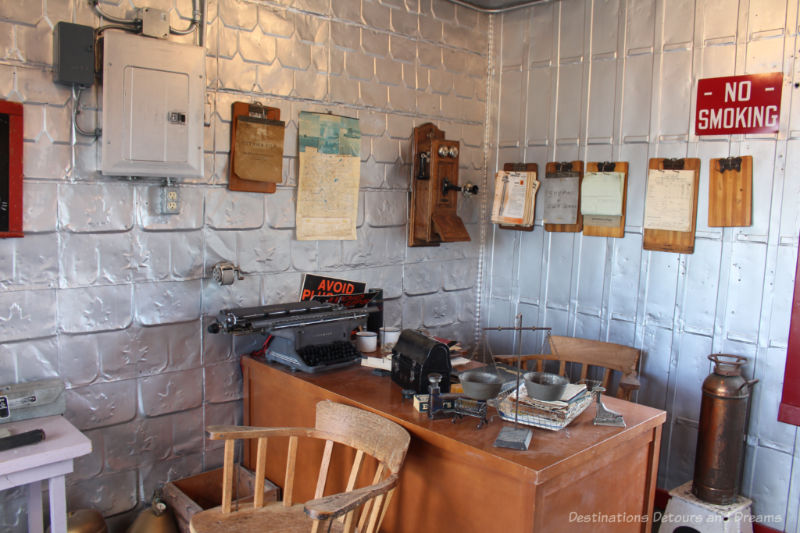
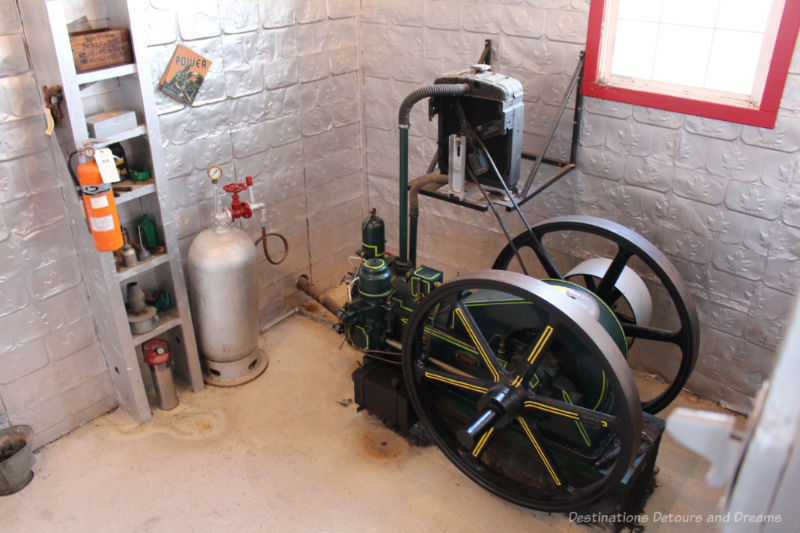
Inglis, which was once known as the Barley Capital of Manitoba, is located in western Manitoba in the Parkland region. Inglis Grain Elevators National Historic Site is open daily July to September. Guided forty-five minutes tours are available, but you can also take a self-guided tour, which is what we did. Signage provides information on the elevators’ histories, the mechanical operation of the elevator, and grain grading and processing.
Never miss a story. Sign up for Destinations Detours and Dreams free monthly e-newsletter and receive behind-the-scenes information and sneak peaks ahead.
PIN FOR LATER
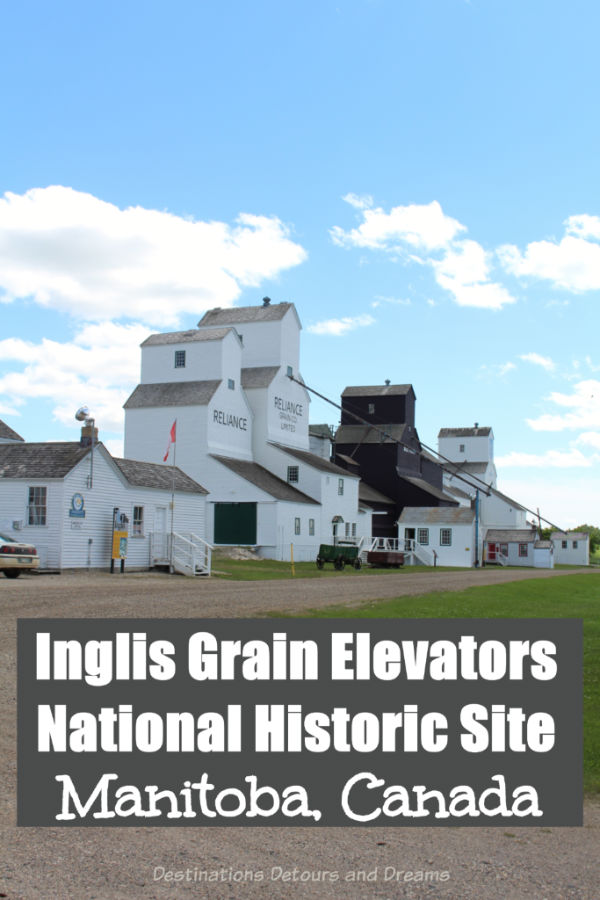

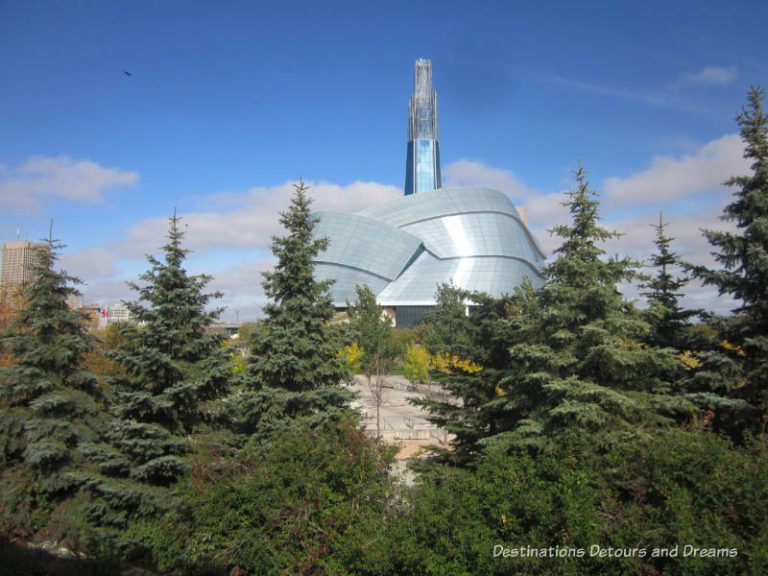





I’ve never been inside one of these and if I ever saw one from the outside I probably didn’t know what it was. Interesting post and some pretty impressive structures.
Ken, the elevators seemed pretty commonplace to me growing up, but as I learn more about how they operated I am impressed by the clever design.
Donna, I LOVED this. I’m crazy about old agricultural sites like this and had no idea this existed. And it isn’t even that far away! I’ll be adding this to my travel list.
Cindy, it is an interesting site. These grain elevators were once an iconic symbol of the Canadian prairies. If you do make it here, I suggest also visiting the nearby town of Neepewa and touring Farmery, an estate brewery making beer from their own barley and hops. I will be writing about it sometime in the future.